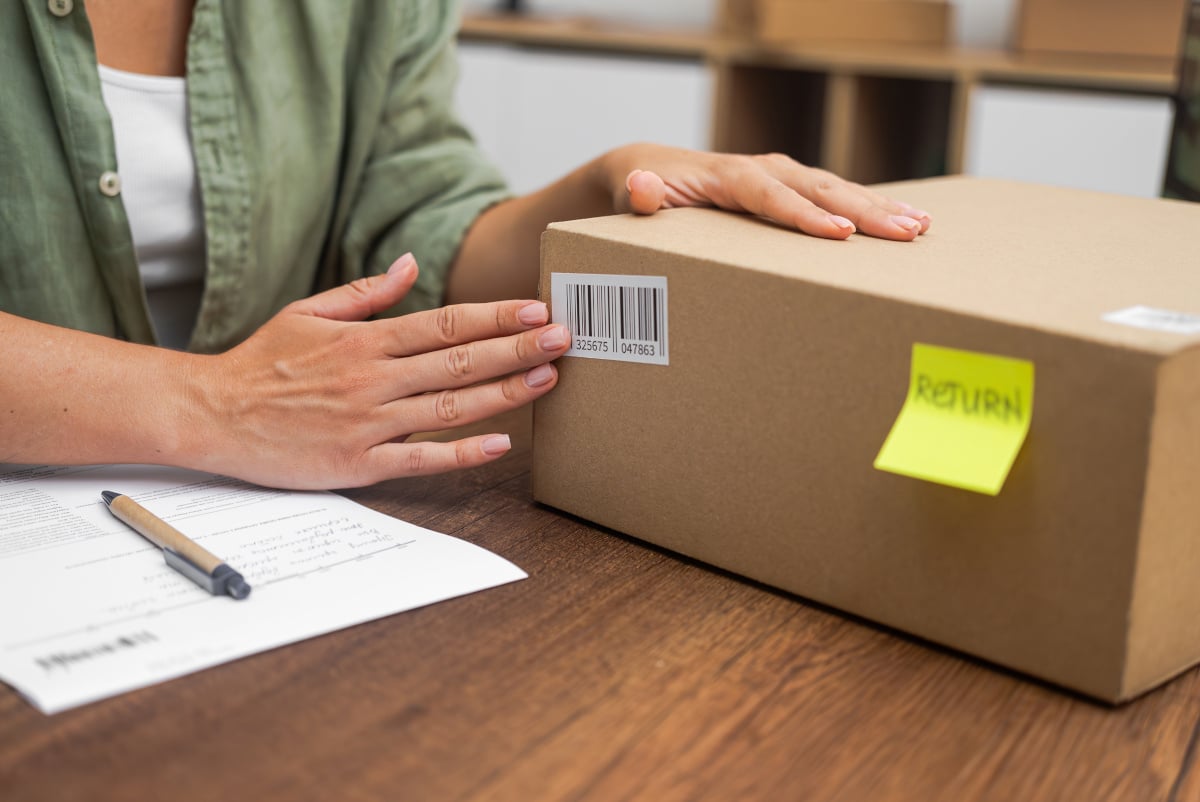Discover 5 ways returns analytics can be used to optimize CX for greater customer lifetime value, brand advocacy, and net revenue.
The importance of the customer experience can’t be overstated. Positive customer experiences naturally promote loyalty, brand advocacy, and higher customer lifetime value. Adobe has even said, “86% of consumers say they’re willing to pay more to receive a superior customer experience. And 64% are more likely to recommend your brand if they have a great experience, leading to increased referral business and higher return on investment.”
Whether it’s via product reviews, word-of-mouth referrals, or influencer shoutouts, the speed with which customers can share their experiences is faster than ever. While that’s great news for retailers that provide positive customer experiences, it can be detrimental for those that leave something to be desired.
Fortunately, the granular data from return analytics provides insights that not only identify CX issues but can also be used to develop targeted solutions.
1. Leverage Behavior Insights From Return Analytics to Optimize CX
Optimizing the customer experience should always start with, you guessed it, the customer. Understanding what drives purchasing behaviors is vital when developing retail experiences that promote first purchases, repeat purchases, loyalty, brand advocacy, etc. Without incorporating customer behavior insights from return analytics, however, retailers will be making decisions without all of the necessary information.
The granular data from post-purchase behaviors, like return transactions, can help retailers understand customer behavior at the channel level, by region and/or country, and it can even help discern the impact of returns on both new and loyal customers.
For example, listing products across multiple sales channels allows customers to shop and purchase in the method that best suits their needs. That doesn’t mean, however, that shopping habits and behaviors will be consistent across those channels. Analyzing and comparing returns data across channels can help retailers find opportunities for omnichannel CX improvements.
Additionally, retailers wanting to create more personalized shopping experiences will find invaluable insights within their return analytics. Imagine many shoppers bracket a garment in multiple colors while maintaining a high keep rate. In this instance, it may be advantageous to recommend an additional color to shoppers who have added a single variation to their cart. This improves the likelihood of a larger cart size while also conveying to shoppers that a business pays attention to their purchasing preferences.
2. Improve Customer Experience With Customer-Centric Return Policies
Just because a customer is returning a product doesn’t mean they’re dissatisfied or that they might not still have a high customer lifetime value. Each return is an opportunity to develop loyalty, protect net revenue, and even attain additional sales. That means every customer experience strategy should include a discussion about return policies using data from returns analytics.
For example, while many customers abide by the no-return policy on final markdowns, even a small percentage of returns can lead to the loss of millions of dollars. Sometimes these transactions occur from lack of enforcement by staff, website design flaws, or even glitches within a post-purchase platform. However, they can also happen because customers don’t fully understand the return policy. Returns data can help retailers identify where and why these interactions are taking place so policies can be optimized accordingly and issues can be resolved swiftly.
Instead of implementing a policy and assessing its success after it has impacted sales, data-driven insights from return transactions can help you develop a policy that caters specifically to your customers and your business needs.

3. Optimize Inventory Management with Returns Data for Fewer Supply Chain Delays
Efficient order fulfillment is a vital aspect of the customer experience. Whether shoppers are having products delivered to their door or they’re using BOPIS (buy online, pick up in-store) services, customers expect to receive the right product within the promised timeframe. In order to accommodate that expectation, businesses can use returns analytics to optimize inventory management for fewer supply chain delays.
For instance, accurate inventory forecasting ensures businesses have enough products to meet demand. While keeping less inventory on hand can reduce risk-holding and warehousing costs, it can also increase the likelihood of stock-outs. Fortunately, returns data provides insights that can improve the accuracy of forecasting since returned merchandise can often go back into inventory
Returns analytics can even be used to optimize warehouse staff management. Accurate sales forecasts and return volumes help businesses maintain minimal staff when products are likely to move slowly and additional staff when sales volume is likely to increase. In addition to ensuring warehouse staffing needs are appropriate for on-time fulfillment, it also means labor costs will be used more efficiently.
4. Improve CX By Using Returns Data to Optimize Product Information
Whether it’s a lack of images, inadequate product descriptions, or sizing chart issues, details like these lead to higher returns and negative consumer experiences. E-point even says, “Inadequate product descriptions are the reason 98% of people abandon a purchase on a specific e-commerce website; 87% prefer to shop in a place that provides more detailed product information.”
Not only can returns analytics reveal product return reasons, but it can also be used to develop targeted solutions that directly address these issues. Perhaps one of the best examples of this is sizing charts.
Sizing issues are one of the largest contributors to consumer returns. Without adequate sizing details, consumers have a harder time selecting the correct item, which can lead to higher returns and/or exchanges. Since customers can’t try on clothing when shopping online, this is a serious problem for retailers that only have digital product listings.
Returns analytics can help retailers understand where and how their product information may be lacking, confusing, or inaccurate. Oftentimes, retailers need to provide brand-specific sizing charts, higher-quality images, or even additional information about product features that can impact size, fit, or functionality.
Whatever the case may be, returns data can help identify product information issues that may be negatively impacting customer experiences.
5. Use Returns Data to Reduce Damaged Products and Improve Future Product Development
It should go without saying that customers don’t want to receive damaged products. This obviously leads to poor customer experiences that can damage loyalty, diminish customer lifetime value, and negatively impact a brand’s reputation. In the end, the cost can far outweigh that of the initial damaged product.
However, when businesses promptly respond to damage claims, they can build customer loyalty, more easily protect their bottom line, and even improve the development of future products. And returns analytics plays a pivotal role.
The granular data from return analytics can help businesses determine whether damage is the result of textile sourcing, manufacturing, design, shipping, etc. This data can then be used to create solutions that reduce return rates from damages, increase customer lifetime value, and so much more.
Develop Data-Driven Customer Experience Solutions with the Returnalyze Intelligent Dashboard
Returns data is essential for a comprehensive understanding of your consumer experience. Even your most loyal customers will return products occasionally. The data from these returns can be used to optimize the experience for other loyal customers, potential loyal customers, and even first-time shoppers. That means every return transaction is an opportunity for you to gather information that can positively impact loyalty, reputation, and net revenue.
The right returns management platform makes gathering that information easier than ever before. Not only does the Returnalyze Intelligent Dashboard compile massive amounts of data, but it can also cross reference that information to identify customer experience trends and outliers.
Additionally, a partnership with Returnalyze comes with step-by-step guidance from our data experts to help you develop actionable solutions. Don’t wait until your CX strategy has already negatively impacted your business reputation.
Ready to take charge of your customer experience strategy with returns analytics? Schedule a demo or contact our team today.



